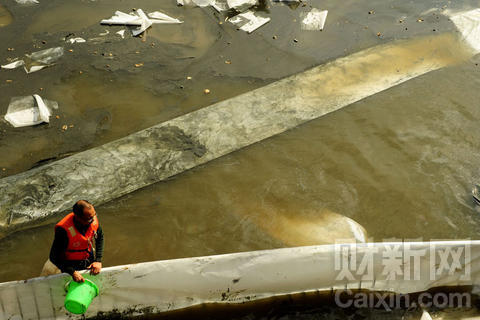
(Ecns.cn) -- Only half of China's water treatment plants are capable of providing drinking water that meets national standards, a situation that has not improved since 2009, experts tell Century Weekly magazine.
Song Lanhe, chief scientist at the Water Quality Monitoring Center under the Ministry of Housing and Urban-Rural Development (MOHURD), says that nearly all water and sanitation experts worry about the safety of China's drinking water, despite the suspiciously high rate of "qualified" water treatment plants here.
Pollution in drinking water and water sources remains a serious issue, adds Song, and the tap water of many cities contains myriad heavy metals and chemicals that are harmful to human health.
Regulations with no teeth
Starting from July 1 of this year, China plans to implement its strictest-ever sanitary standards for drinking water. However, many people worry the new standards will not be effective without punitive actions to reinforce them, reports the Century Weekly.
The current standards were first created by the Ministry of Health in 1985 and include 35 test items. The new standards are to cover more content and extend the number of test items to 106.
Yet even under the relatively lax current standards, many of China's water treatment plants cannot pass muster.
In late 2009, the MOHURD conducted a nationwide survey of tap water quality in over 4,000 plants in different cities and towns, but the results have never been released to the public.
According to Song Lanhe, the water quality of more than 1,000 treatment plants did not meet national standards in that survey, indicating that a quarter of all plants could not satisfy the 35 tested items. Clearly, the acceptance rate would be even lower using the new standards, says Song.
The new standards are modeled after those of the European Union, and are the result of six years of deliberation and joint efforts by five governmental agencies led by the Ministry of Health, Song adds, but the absence of punitive measures only makes them guidelines, which are hard to implement mandatorily.
In addition, water tests are conducted twice a year at plants that treat surface water, and only once a year at those using underground water, the frequency of which is insufficient to monitor quality, says Song. Developed countries usually carry out such tests once every month, he adds.
Dangerous resources
In China, substandard tap water quality is closely related to water resources, since 97 percent of domestic water treatment plants still use the traditional methods first adopted by Belgium in 1902.
The treatment involves four steps, including flocculation, sedimentation, filtration and disinfection with chlorine or other chemicals, which was invented at that time to kill germs.
Although this type of treatment can ensure that unboiled tap water is safe to drink in developed countries such as the U.S., it is not effective in China, because water here is contaminated by many pollutants such as heavy metals, points out Liu Wenjun, director of the Division of Drinking Water Safety at Tsinghua University.
Statistics published in a 2010 report by the Ministry of Environmental Protection (MEP) paint a much rosier picture however, with 76.5 percent of urban drinking water and 70 percent of water sources meeting national standards.
But this was not the truth, Liu says, because the MEP's testing criteria were insufficient, covering only 24 test items. The MEP also miscategorized substandard water samples to meet qualifications, he says.
For those water samples, the chemical oxygen demand (COD) was between four and six milligrams per liter, but traditional water treatment is only effective on water with COD below four milligrams per liter.
According to Liu, if the proper criteria are used, only half of the treatment plants in China are qualified to provide drinkable water, while pollutants such as heavy metals and other chemicals in waterways continue to challenge the efficacy of traditional water treatment methods.
Negative impacts
In recent years, water sources have become contaminated not just by pollutants discharged from local industry, but also by the overuse of fertilizers, pesticides and waste from cattle and domestic fowl.
Moreover, a lack of sewage treatment facilities has made the protection of water sources an even more difficult task.
According to Wang Zhansheng, an environmental professor at Tsinghua University and a leading expert on water issues, the survey conducted by the MOHURD in late 2009 shows that poor water quality in surface-water treatment plants usually results from high levels of organic compounds. Currently, 756 organic compounds have been found in drinking water, including 20 carcinogens, 23 suspected carcinogens, 18 promoting carcinogens and 56 mutagens.
The consumption of such pollutants will not result in immediate damage, Wang says, but if they are allowed to accumulate in the body they can lead to mutations and chronic diseases such as cancer.
Comprehensive environmental protection is the only solution to substandard water quality, and water resources must be protected through joint efforts by the central government, local governments and other departments. Safe drinking water can be permanently guaranteed only if the environment is fundamentally improved and protected in a sustainable manner.

Copyright ©1999-2011 Chinanews.com. All rights reserved.
Reproduction in whole or in part without permission is prohibited.